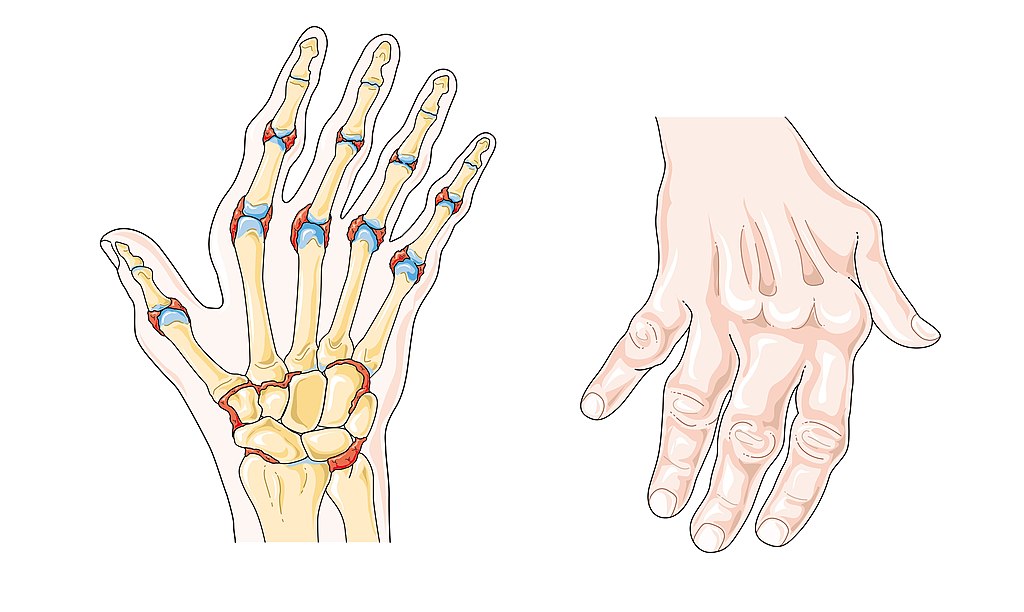Paresthesia in older people. The tingling that older people feel on a regular basis can be caused by many different diseases, as it is usually a characteristic symptom of many of the most common pathologies of senior citizens.
Distinguishing the tingling according to the zone of the body in which it takes place, we explain the most typical causes of each type of tingling:
Paresthesia in older people: Tingling in the hands
The tingling sensation in the hands or fingers may be due to the existence of the following pathologies:
Causes of tingling in the hands: peripheral neuropathy
Up to 15% of older people suffer from peripheral neuropathy. This is a disorder that affects the peripheral nervous system, causing interference with the vital connections between the brain and the rest of the body.
Each nerve develops a highly specialized function at a specific point in the body, so when any of these nerves is damaged, a wide range of symptoms can occur.
Among the most common are the following:
Tingling in hands and feet, which can extend to other areas of the body.
Extreme sensitivity to touch.
Feeling of pain when performing activities that should not cause it.
Lack of coordination and falls.
Muscle weakness.
Sensation of wearing gloves or socks when they are not.
Intolerance to heat.
Extreme sweating or inability to sweat.
Digestive, intestinal and bladder problems.
Changes in blood pressure.
Causes of tingling hands: carpal tunnel syndrome
Carpal tunnel syndrome is a condition that damages the meridian nerve by pinching or compressing it as it passes through the wrist.
The causes of this condition range from injuries and work routines to certain diseases (such as rheumatoid arthritis), the size of the carpal tunnel itself, or gender factors (women are three times more likely to suffer from it than men).
As for their symptoms, these are:
Tingling in the fingers. In general, the fingers that suffer it are the thumb, the index, the middle and the ring, but not the little finger. The sensation can extend from the wrist to the arm.
Weakness in the hands caused by numbness or loss of strength from the pincer movement made by the thumb.
The tingling, numbness and pain become more acute at night.
Causes of tingling hands: synovial cyst
A synovial cyst is a type of nodule that forms near a joint. Its appearance is very characteristic, having a lump shape with a rounded appearance and soft texture. Although it does not cause pain, it does present other uncomfortable symptoms, such as the following
Constant tingling in the area where it has formed.
Pain near the affected joint.
Loss of strength in that joint.
Decreased sensation in the area
Tingling in the arms
Tingling in the arms can be a sign of the existence of ailments like tendonitis or be caused by avoidable causes like bad posture:
Causes of tingling in the arms: tendinitis
As we age, our tissues deteriorate. This is why tendinitis is a very common ailment in senior citizens. Among the types of tendonitis, in recent years there has been a large increase in the injury of the shoulder tendons, which is the most common cause of shoulder pain in senior citizens.
Shoulder tendinitis is usually caused by exercises or activities that require raising the arms above the head, and these are its symptoms:
Intense pain located in the shoulder.
Sensation of pain spreading throughout the arm.
Discomfort when lifting the arms or making certain movements with them.
Loss of strength.
Sometimes constant tingling.
Causes of tingling in the arms: bad posture
It is important that dependent older people are mobilized in a proper way, since a bad posture can cause them from tingling to wounds. When a limb is pressed for a long time, this tingling and subsequent numbness may occur.
For this reason, it is essential that mobilizations and postural changes be performed by a professional caregiver, who has experience in caring for people with a high degree of dependency and knows the use, if necessary, of systems to carry out mobilizations and transfers.
Paresthesia in senior citizens: Tingling in the legs and feet
The tingling in legs and feet is very frequent in the older people, which, with reason of the age, see increased most of their ailments. Between the causes that can cause it, they emphasize the following ones:
Causes of tingling in the legs and feet: Diabetes
People with diabetes may suffer a type of nerve damage called diabetic neuropathy. This is caused by high blood sugar, which can damage the nerves in different regions of the body.
The symptoms of diabetic neuropathy are
Tingling sensation, numbness or lack of sensation in the feet.
Sharp, stabbing pain that appears without justification and persists despite taking painkillers.
Extreme sensitivity in the feet.
Appearance of ulcers or skin lesions on the feet or calves.
Inability to detect low blood glucose levels
Causes of tingling in the legs and feet: Alterations in circulation
Poor circulation is a very common problem for older people. This can lead to more serious conditions, such as venous ulcers.
One of the greatest risk factors is the lack of mobility of senior citizens, which causes inadequate blood circulation.
In order to know if our family member has circulation problems, we must pay attention to the following symptoms:
Tingling and cramps or pricks in the legs.
Swelling of the extremities and feeling of heaviness.
Appearance of spider veins.
Dry or scaly skin.
Swelling in legs and feet.
Pain and tiredness in the legs.
Causes of tingling in the legs and feet: Restless Legs Syndrome
So-called restless leg syndrome (or Willis-Ekbom disease) is a condition that causes an uncontrollable urge to move the legs. It usually occurs in the afternoon or evening when sitting or lying down and its main symptoms are
A need to move your legs.
Tingling in the legs.
Itching.
Puncture pain.
Worsening of the symptoms if the hours of sleep are reduced.
Relieved feeling when moving the legs.
Causes of tingling in the legs and feet: Herniated disc
The herniated disc or disc herniation is a disease in which there is a displacement of the nerve of the invertebral disc towards the nerve root, to which it presses, causing intense pain.
The disc herniation occurs mainly in the lumbar area and, secondly, in the cervical area.
Symptoms of paresthesia in senior citizens: of herniated disk
Pain in arms or legs.
Tingling and numbness radiating from the area where the affected nerves are located.
Muscle weakness, which can make it difficult to grasp objects and increase the risk of falling
Causes of tingling in the legs and feet: Multiple sclerosis
The tingling sensation in the legs may be the first symptom that alerts about multiple sclerosis. In this entry we explain in detail what the disease consists of, its causes, its symptoms and the type of treatment that those affected follow.
Paresthesia in senior citizens: Tingling in the head or face
The tingling is not exclusive to the extremities, it can also occur in other areas of the body such as the cranial area or in the face itself. Among the causes that can cause this condition, they stand out:
Causes of tingling in the head or face: Migraine
Dilation of artieris located inthe skull cause headaches. This one can be caused by very diverse factors: age, inheritance, stress or anxiety, hormones, feeding, lack or excess of dream and environmental elements.
The migraine presents/displays the following symptoms:
Acute, deep pain and in form of hammering in one of the halves of the head.
Tingling in the head or the face.
Numbness in a side of the body.
Visualization of points or flashes of light.
Difficulty speaking.
Nausea and constipation.
Sensitivity to light and sound.
Cervical stiffness.
Changes in mood.
Causes of tingling in the head or face: anxiety
Older people often suffer periods of anxiety or depression, caused by various physical and psychological factors. In spite of their importance and their consequences in the quality of life of those who suffer from anxiety crises, medical specialists warn that they are usually under-diagnosed and under-treated disorders. For that reason, we must be attentive to the symptoms that can indicate to us that we are before a crisis of anxiety, being these those that we enumerated next:
Tingling sensation in the face.
Numbness in both hands, feet or legs.
Excessive sweating.
Palpitations.
Lack of air or abdominal pain.
Heaviness and heartburn.
Dizziness.
Fatigue upon awakening.
Causes of tingling in the head or face: vitamin deficiency
More than half of all older people are deficient in vitamins D and B12.
Vitamin D is involved in a large number of physiological processes, such as the absorption of calcium in the bones. As for vitamin B12, vitamin D deficiency causes health problems such as anemia.
A shortage of these vitamins in our body can cause a tingling sensation in the hands and feet, among other symptoms such as weakness, impaired coordination, unsteadiness in walking, dizziness, or fatigue. We at Nomenial hope this article about Paresthesia in older people has been informative and useful.







